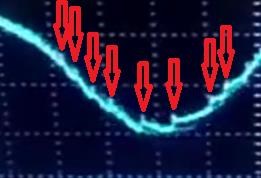Brian
posted this
06 April 2022
Hi team
I have spent some time working with the different FETs. The following are my observations.
Using the IRF3205 the circuit works happily on a supply of 2V, But if I substitute the IRF840 the supply needs to be increased to 4V to get it to switch. This is a little confusing as the specs of both indicate a min threshold voltage of 2V - am I looking at the wrong specification here?
The knock on effect is the different supply voltage then induces a different frequency of operation for the coils / circuit interaction.
So then I explored that maybe I needed a higher supply to hit the required resonance? The first point of note is with the use of either FET as I increase the supply (up to a max of 9V which is the design) the current draw increases till a point where I burnt out the LEDs. I had hoped it would co operate and self run before this point 
As Chris has pointed out many times it is Magnetic resonance that is required so we need to ensure the circuit operates in the region of this resonance. With this in mind I went back to measure the the coils I am using to see if this might provide some clues if I was in the correct range. The unloaded (open) measurements are:
L1 28.9mH, 158uF, 0.7ohm - which calculates a resonant frequency of 74.48Hz = this is within the range of what I am able to tune the circuit.
But this is where I need some direction to clarify my understanding. Firstly if we then connect L2 to the circuit as the load, the measured characteristics change (measure L1 with L2 in circuit, the resonant frequency result is 982Hz). Secondly it is my understanding the magnetic and calculated electric resonance do not necessarily appear at the same frequency and the interaction between coils and loads impacts this greatly. I have been attempting to confirm the point of magnetic resonance by scanning the input frequency to L1 with L2 loaded while measuring the current draw and response voltage, looking to minimize the current and maximize the voltage as a indication of the correct frequency to work towards.
I guess my simple question is - is there a process / procedure or calculation that is able to more closely identify the required design specifications to reach our goal? I feel that this may be the genius of Andrey, his knowledge and understanding is such that this answer is second nature.
I note also that working with various POC designs, many measurements and results are much clearer and predictable, than my experiences with this experiment. This is the Genius of Chris's POC work and guidance.
Anyway a quick update and more work to do.
Kind Regards
Brian












 I tried further tuning via the timing cap on pin3 of the MC34063, but the effects were minimal.
I tried further tuning via the timing cap on pin3 of the MC34063, but the effects were minimal.































